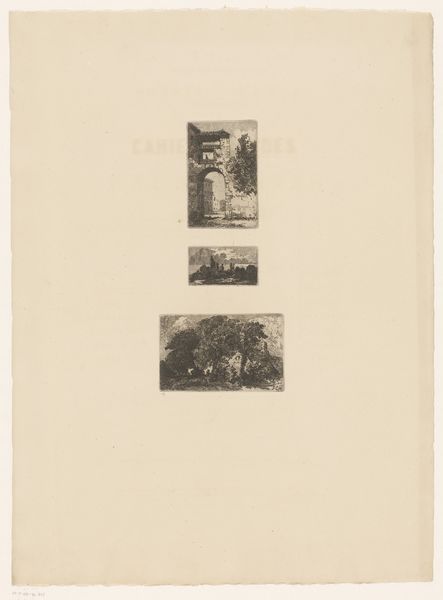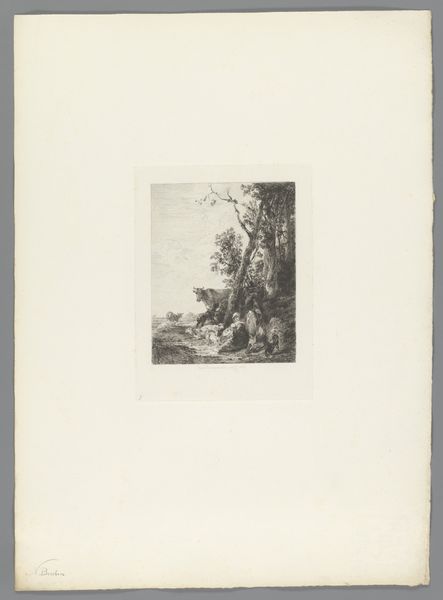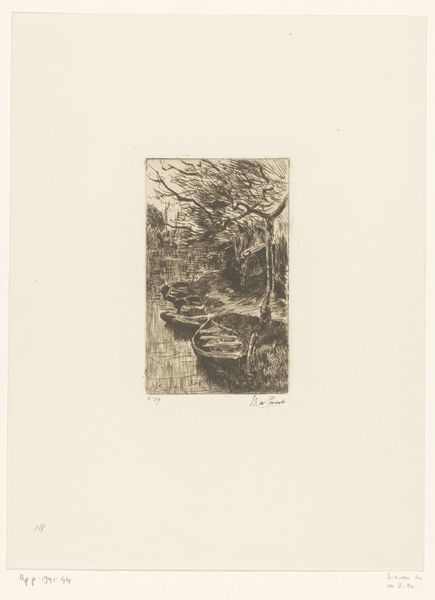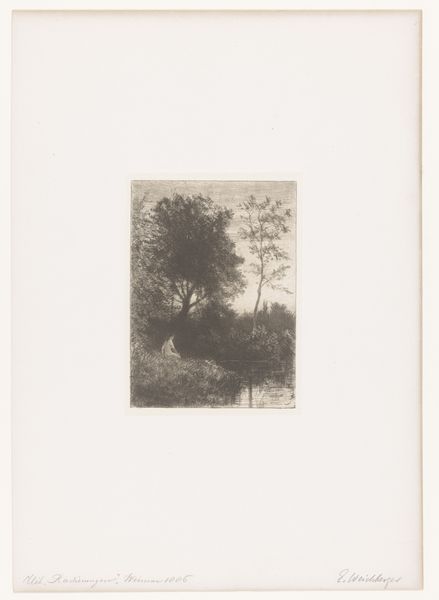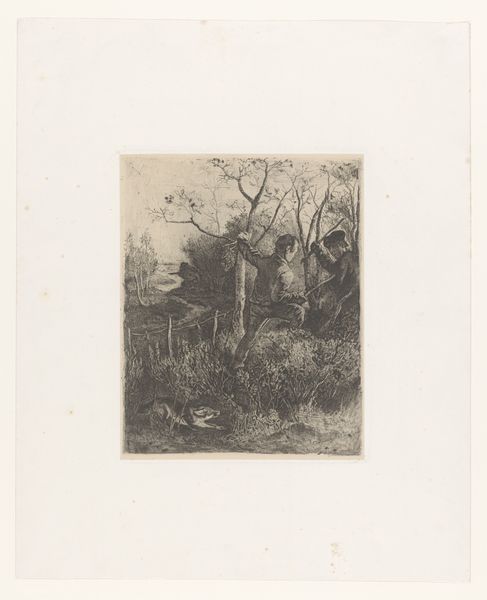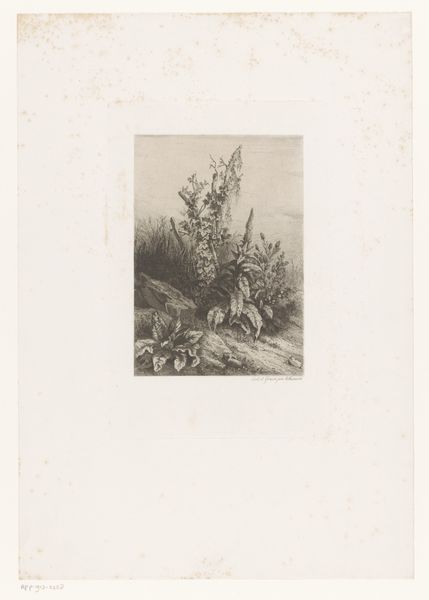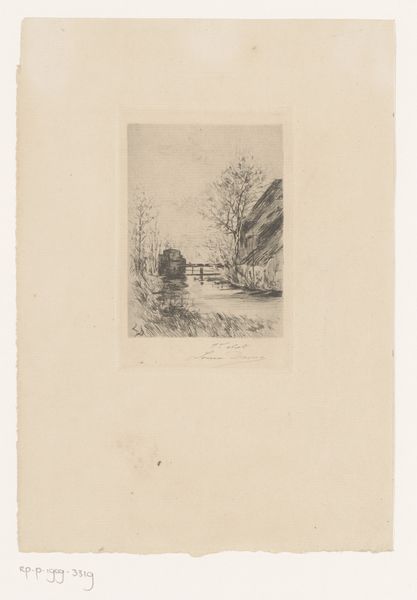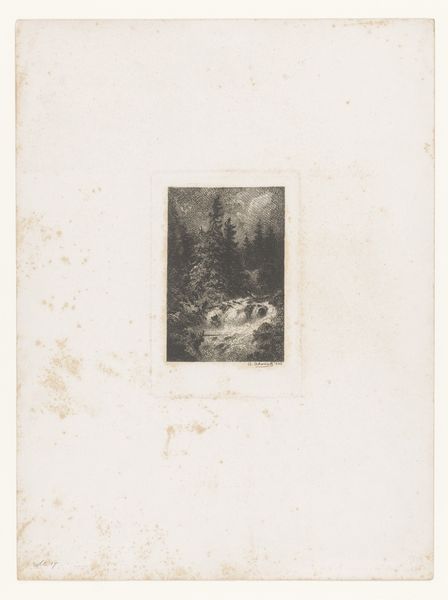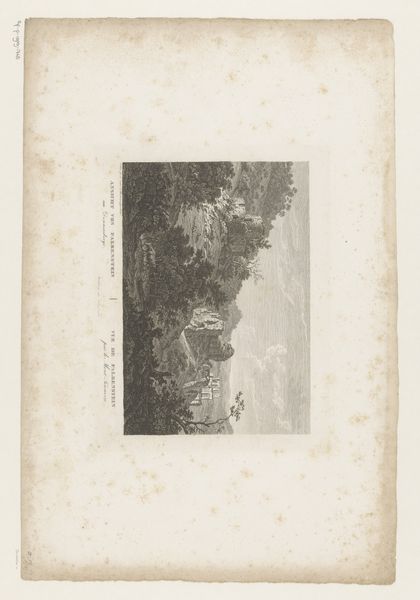
Dimensions: height 200 mm, width 119 mm
Copyright: Rijks Museum: Open Domain
Curator: Let's explore "Watermolen in een bos," a landscape etching crafted by Auguste Numans sometime between 1833 and 1879. Editor: It’s remarkably detailed, considering the modest scale. The overall impression is somber and brooding, almost theatrical. I’m drawn to the texture and light, or rather, the carefully orchestrated absence of it. Curator: Indeed. Considering Numans’ social circle, one must view his technique through the lens of 19th-century printmaking’s evolution, where reproductive etching was crucial for disseminating landscape imagery to a broader audience. It served as a visual commodity within an expanding market. Editor: From a purely formal perspective, notice how Numans creates depth through subtle gradations of tone. The composition leads the eye from the dark foreground, up past the implied architecture, towards a blurred sky, relying almost exclusively on value contrast. How very romantic. Curator: Exactly. The ‘Romantic’ reading is sustained if one acknowledges the transformation of labor. Here, the picturesque watermill—a symbol of rural industry—exists as a consumable image, disconnected from its lived, material reality of production and maintenance. Editor: However, Numans also invests the mill with a kind of solitary grandeur. Look at how its angular structure contrasts with the soft foliage. The deliberate use of light and shadow emphasizes its silent, enduring presence amidst a scene dominated by nature. This elevates the ordinary building to an aesthetic and semiotic object worthy of consideration. Curator: Fair. But consider the materiality of the work itself. Numans likely worked with commercially produced etching plates and acids. His artistic output directly relates to capitalist dynamics that turned landscapes into commodities and artists into producers within a larger industrial process. The finished product naturalizes and conceals those processes. Editor: A provocative counterpoint. Nevertheless, what lingers is the enduring impact of tonal arrangements. Curator: Point taken. And perhaps, we find value in both understanding of production of such idyllic scenes.
Comments
No comments
Be the first to comment and join the conversation on the ultimate creative platform.


